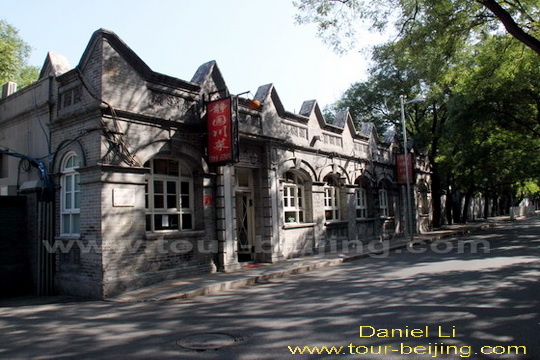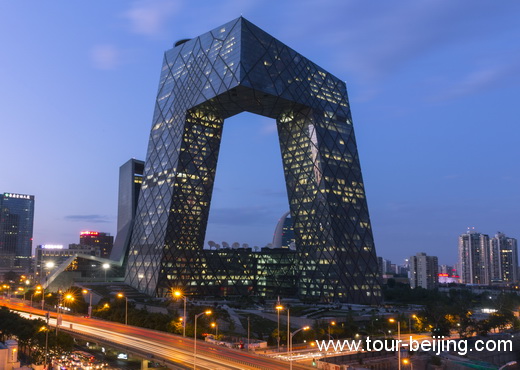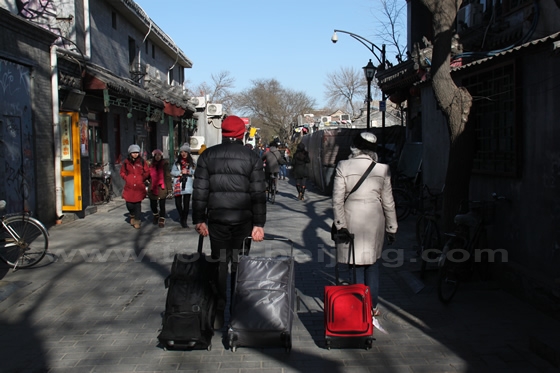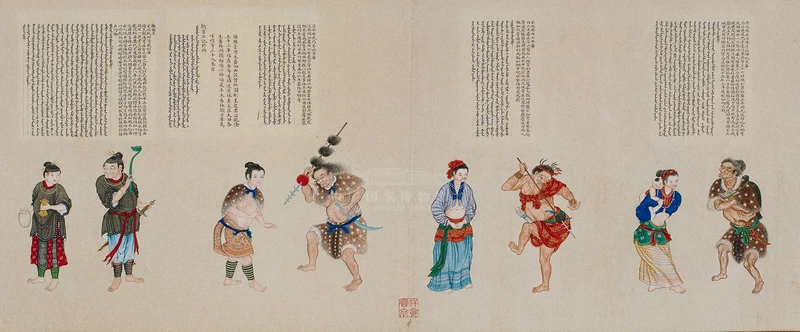Plan your Beijing tour, the capital city of People’s Republic of China with its long history, vernacular and modern architecture, and dynamic culture is often your first stop to start your exploration of the ancient and mysterious China.
Like other big capital cities, Beijing is one of the most expensive cities in the world to live in and visit. But Beijing is also a wallet friendly city with great choices of cheap accommodations, countless free things to do and affordable way of transportation to use. So don’t let worries about the cost of things put you off travelling Beijing.
As Beijing local residents we’ve collected some tips about what to see and do without breaking the bank – and more importantly what not to do. Here are our top 10 budget-friendly tips for visitors to the capital of China – Beijing.
1. Beijing Airport Transfer by public transport
When you arrive either at Beijing Capital Airport (PEK) or Beijing Daxing Airport (PKX), instead of depending on expensive Beijing airport taxis, you may use Beijing airport shuttle buses, airport subway or Beijing airport express trains.
2. Locating affordable accommodations
Though Beijing is teemed with swanky hotels, finding a cheap and cozy hotels or inns are not difficult due to the big choices of hostels, inns and cheap hotels. Where to stay in Beijing is one of the questions in your mind. The first thing you should do is to decide which area you should stay in Beijing and then try to locate an affordable hotel in that area.
Our hostel picks are based on a great deal of internet data from real Beijing travelers – Top 10 Beijing Hostels; If you don’t want to spend lots of money on luxury accommodation, but still hope for a decent and comfy stay in Beijing while visiting Beijing, you may choose any of our top 10 picks – Top 10 Budget Hotels in Beijing.
3.Free admission in Beijing.
There are loads of free things to do in Beijing. If you want to know more about these ideas, please check below our version of the top 10 free things to do in Beijing:
1) Tiananmen Square: Tiananmen Square is located in the center of Beijing, 880 from north to south, 500 meters from east to west, covering an area of 44,0000 square meters. It can accommodate one million people for a grand assembly. Now it is the world’s largest city square.
2) Chairman Memorial Hall: Chairman Mao Memorial Hall is to the south of the People’s Heroes Monument in Tiananmen Square. Its construction began in 1976 and was completed in May 1977. It is 280 meters from north to south, 220 meters from east to west, over 57,000 square meters, total construction area of 28,000 square meters.
3.)Qianmen Street: Qianmen Street in Beijing is a showcase of Beijing’s condensed culture and custom,. It has also saw the old Beijing’profound change in various historical periods. Qianmen Street each year attracts a large numbers of tourists from home and abroad, and plays an important role in sino foreign economic and cultural exchanges.
4) Wangfujing Street: Wangfujing is nicknamed “China’s first Street”. Wangfujing Street is just more than 1,000 meters starting from the northern Xisi Street to the southern Chang’an Street, but it is the famous “First Street of China”, also a must see visit place for tourists coming to Beijing.
5) Shichahai: Shichahai refers to the Shichahai Lake Area which is composed of three lakes – Qianhai, Houhai and Xihai. Sometime local people also use “Houhai” to refer to Shichahai. If you lose interest in modern Beijing; if you feel sad about the fact that Beijing is becoming less like Beijing; if you want to sea a traditional Beijing; if you try to find a quiet place in the busy Beijing, come to
6) Sanlitun Bar Street: Sanlitun Bar Street is one of the most “prosperous” entertainment street in Beijing nightlife. Foreigners living in Beijing as well as local big shots often frequent the bar street. Every glowing night, the street is teemed with people bustling, bright colors against the background of city noise and luxury..
7) Hutong (narrow lane): Tourists in Beijing often ask a question “where are Beijing’s hutongs? Statistics shows that when the New China was founded, there were over 2,550 hutongs. Later due to the hutong name change as well as the economic and urban development, there has been much demolition and renovation of the existing hutongs, now Beijing has more than 4,000 hutongs.
8) 798 Space: or Factory 798, is the Beijing “Greenwich Village” or “SoHo”, a part of Dashanzi in the Chaoyang District of Beijing that house a rich artist community. It is nestled in a 50-year old out of service military factory complex with a functional Bauhaus-influenced design.
9.) Silk Street Market: The only world-renowned market, clearly marked on the world’s top tourist map; in the eyes of foreign tourists, on a par with the Great Wall, Forbidden City, Beijing roast duck – she is the Silk Street!
10) Panjiayuan Market: Panjiayuan Flea Market, or Panjiayuan Market, or Panjiayuan Antique Market, or whatever names you use, is a must for those who like something really Chinese.
4. Travel Beijing by subway
The metro network of Beijing is the fastest, punctual, reliable, economic means of transportation traveling in and around Beijing.
All the major attractions in Beijing are linked by subways. Before getting to Beijing, it is advisable to study the subway map of Beijing for a clear picture of Beijing and have a basic knowledge of how to take subway in Beijing and see Tour Beijing by subway for more information.
5. Join the local group tour
Taking parting in a daily departure group tour can be money-saving and more sociable. Each morning, you will be picked up from your midtown hotel, then you will go visit the major attractions together with other tourists.
Groups are kept to about 10 passengers in an air-conditioned coach or van with a professional Beijing chauffeur and a licensed Beijing English speaking tour guide on board who will pass on their knowledge of the sites that you visit on your bus tour, including facts, stories and local information. See Beijing group tour for more details.
6. Visiting the Great Wall of China by public transportation
Renting a car van to visit the Great Wall of China could be very costly. Taking a public bus, especially taking S Trains can be the ideal choice of getting to the Great Wall around Beijing.
Badaling Great Wall is both accessible by S Trains departing from Beijing North Railway Station and Bus 877 from Deshengmen Bus Terminal. Mutianyu Great Wall can be reached by the public bus 867 and 916. See Tips for visiting the Great Wall of China for more information.
7. Eating out and cheap eats
Breakfast is usually included in your hotel room. But hotel lunches and dinners can be very expensive. There are loads of affordable restaurants and snack outlets in Beijing.
Avoiding eating in a touristy area and try to locate a restaurant in a nearby community where local residents dine.
8. Bargain shopping
If you are not interested in shopping at high-end Beijing shopping malls, where everything seems to be overpriced at fixed prices, then why not dig into the plentiful free or flea markets where you can enjoy bargaining with the local vendors. See Top 10 Beijing markets.
9. Travel out of season
Avoid traveling Beijing on China public holidays. If possible, come to Beijing during off season when everything is cheaper – discounted hotels, entrance fees, flights and many more. In addition, the tourist crowds are gone so you can get into many sites hassle free.
10. Tourist Scams
If you are looking for something cheap or free sights in Beijing, you must be vigilent on possible tourist scams which are often disguised as “free lunch”. These “free lunches” turn out to be “pits” that make you fall down. See Beijing top 10 tourist scams.
Tip: Hassle-free Beijing Guided Tours
If you don’t want to go the do-it-yourself route and prefer the hassle-free escorted tours, here are some options for Beijing guided tours:
Beijing Day Tour
Beijing Tour Packages
Beijing Winter Tour
Beijing Autumn Tour
Great Wall Tour
Car Rental in Beijing
Beijing Tours
China City Tours
China Tour
Further Readings
Best Time to Visit Beijing
How to plan a trip to Beijing
Top 10 Attractions in Beijing
How to Visit Forbidden City
How to Visit Temple of Heaven
How to Visit Summer Palace
How to Visit Ming Tombs
How to Visit the Great Wall of China
How to Visit Tiananmen Square
How to Visit Hutongs
How to Visit Olympic Sites
Top 10 Markets in Beijing
Top 10 Shopping Malls in Beijing
Beijing Shopping
Wangfujing Walking Street
Qianmen Commercial Street
Gui Jie ( Ghost Street) Food Street
Any questions, just drop a line.










Beijing is an amazing experience. At some point, you may want to dash off for a night of western style food and entertainment. I suggest going to Sanlitun. Located in the Chaoyang District, north east of the Forbidden City. Here you will find many western restaurant chains and independent restaurants that cater to western vacationers.
Be careful of street food in Beijing and remember that there aren’t letter grades for sanitary preparation like you find in most U.S. cities. Don’t be scared of every restaurant, but exercise caution. Even when it comes to finely prepared food, your stomach may need time to adjust to authentic Chinese cuisine after years of eating the Americanized version.
Be sure to check the U.S. Embassy website for updates on pollution. The pollution in Beijing can be so bad that you will want to stay inside your room. Also, bring eye drops, antihistamines, and a good face mask.
Lastly, using cabs can be a challenge. First, get your destination written out in Mandarin for you before leaving the hotel. Trying to explain where you want to go will be very difficult. If the cab driver does not turn on the meter, tell them to stop and get out, there are times when tourists are scammed by being charged a large sum. And, be prepared for the gas fee. At the end of your trip, about three or four yuan will be added.
Beijing will be a great travel experience for you, all you need to do is perform research and prepare yourself appropriately.